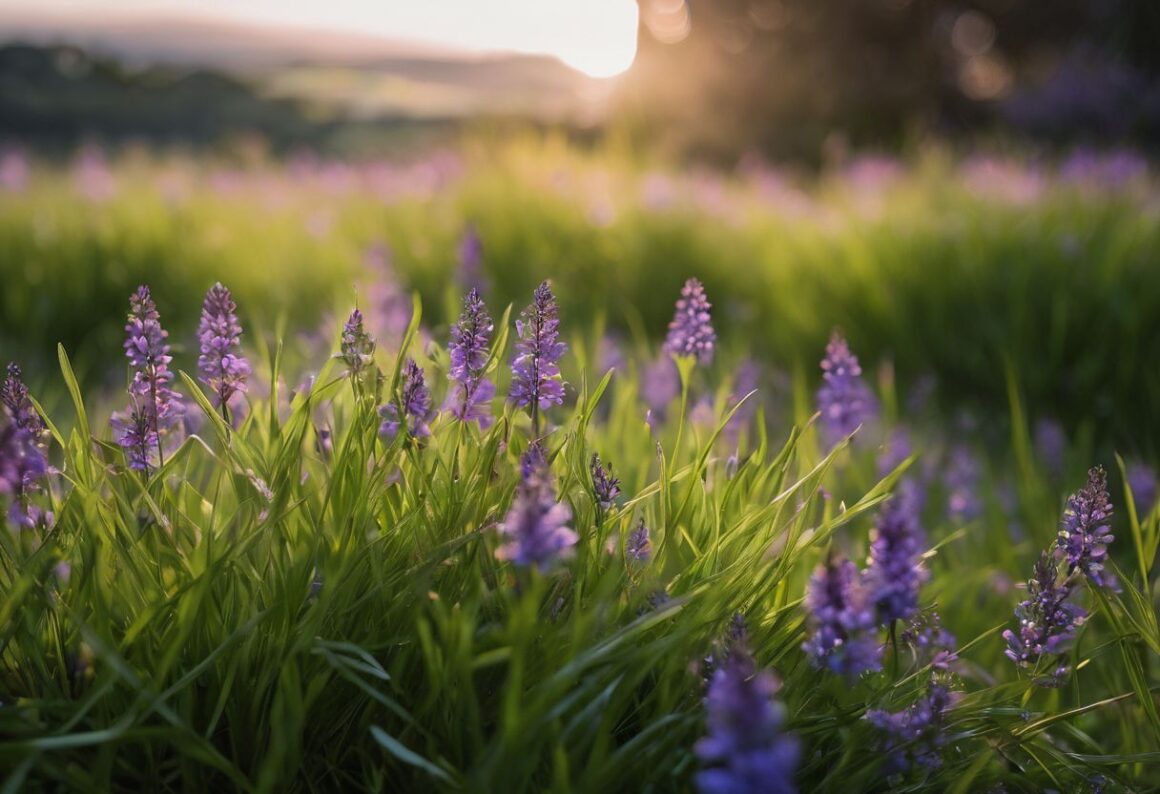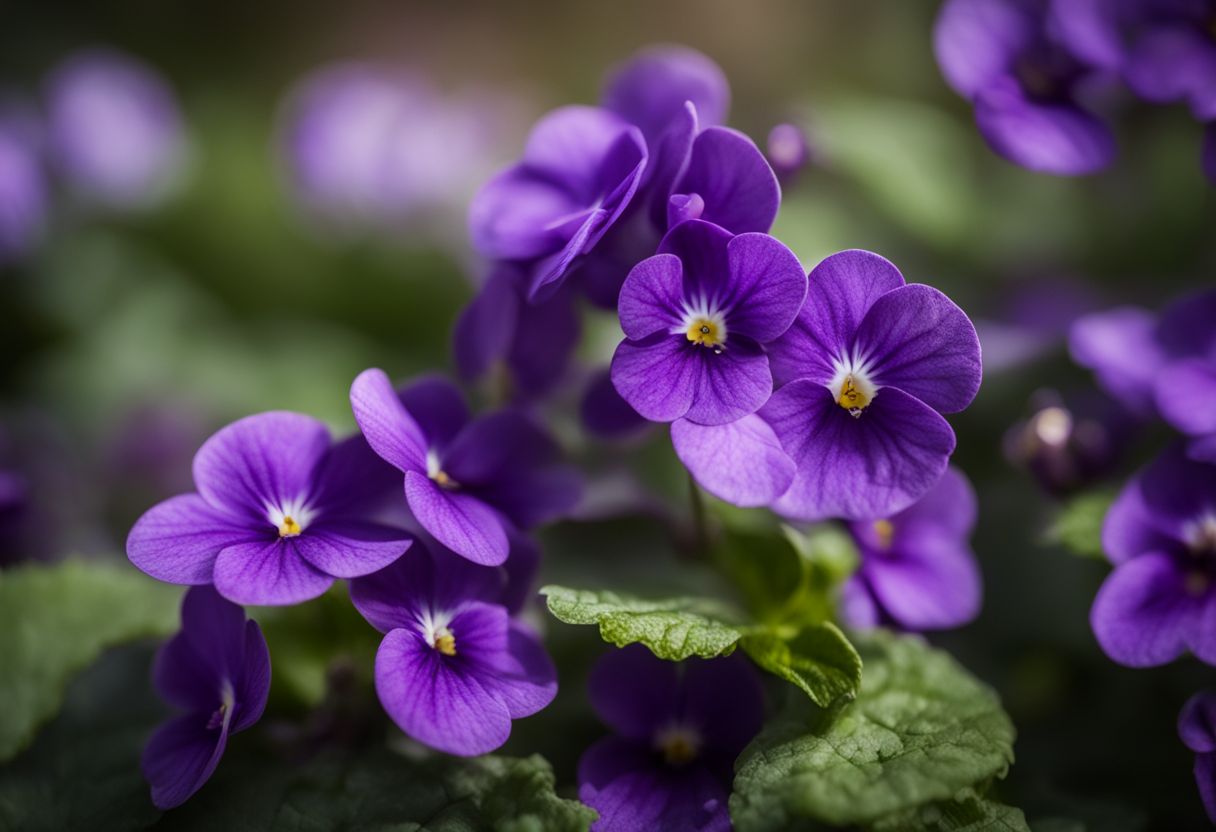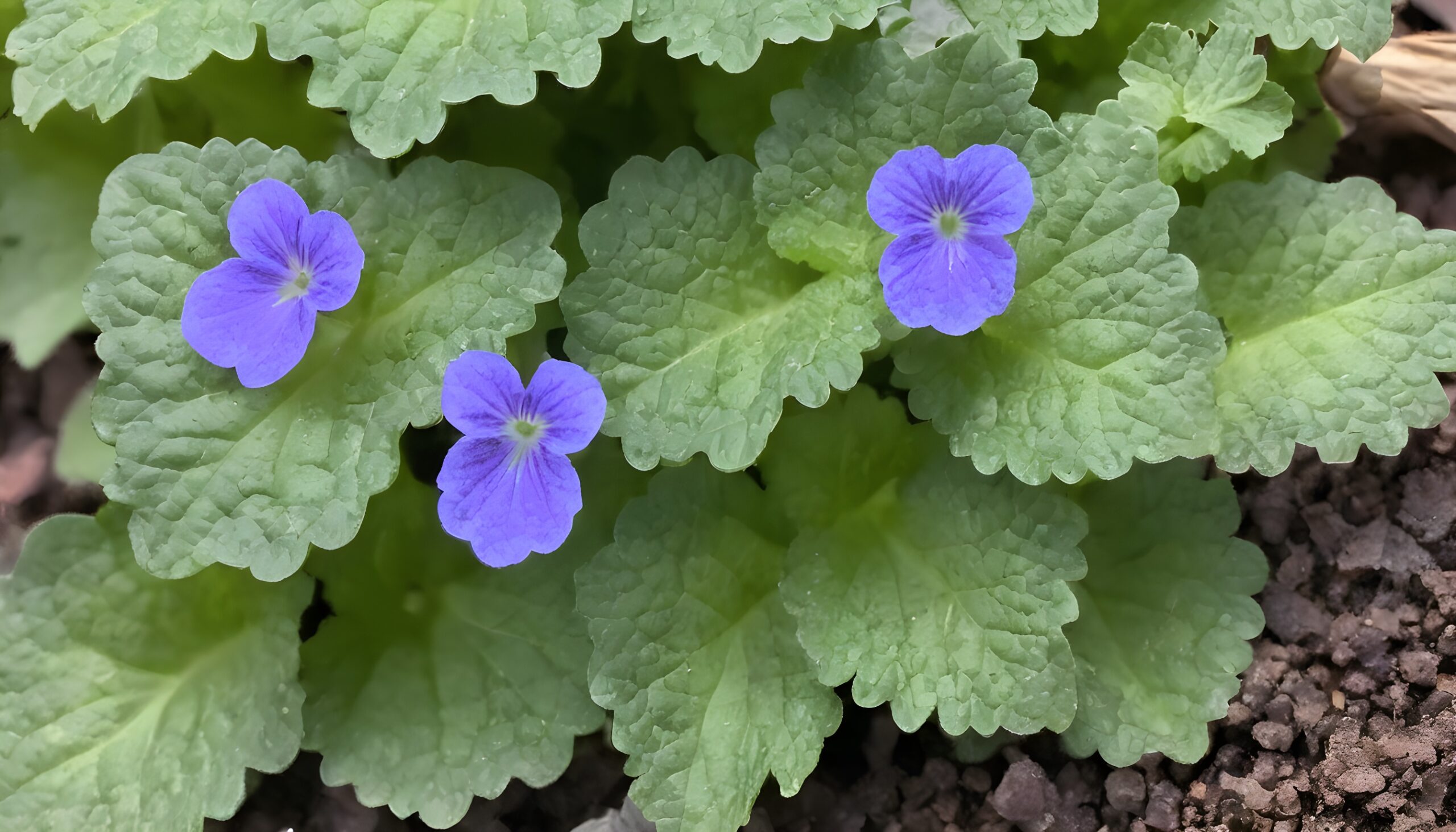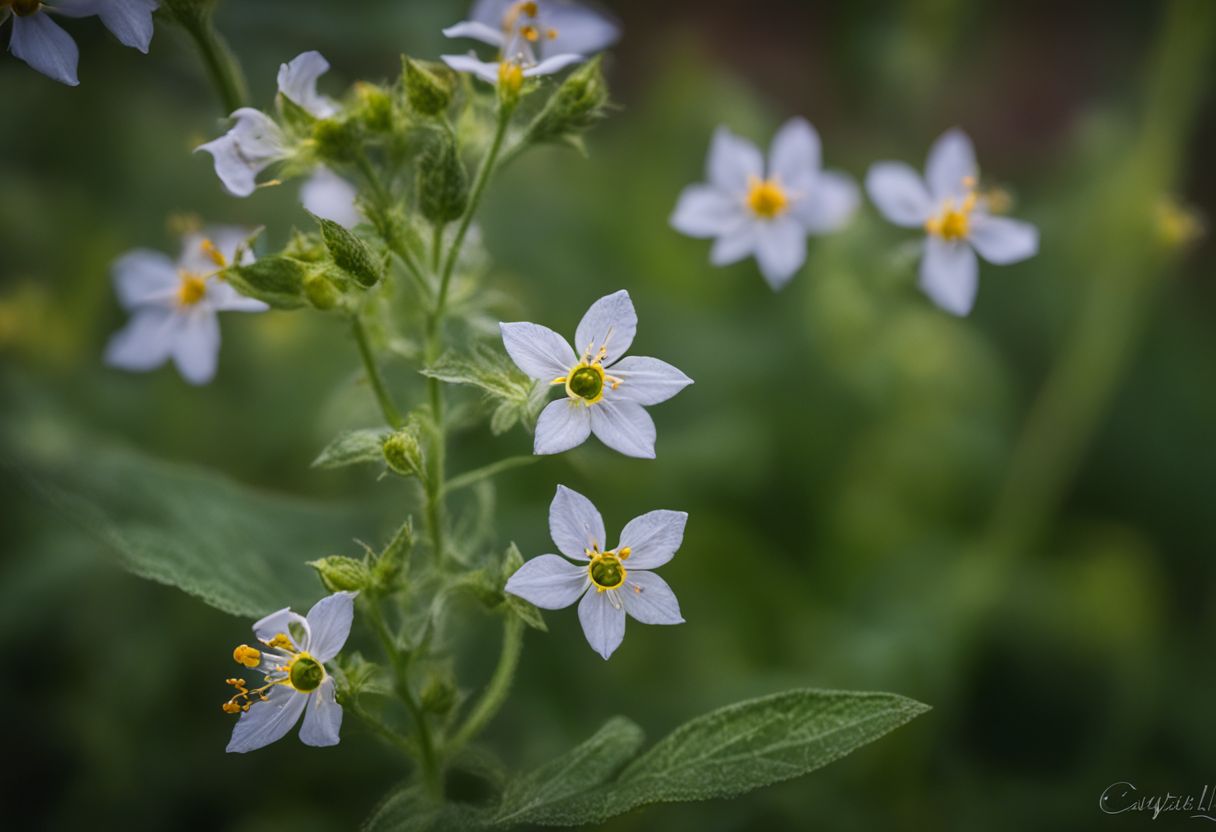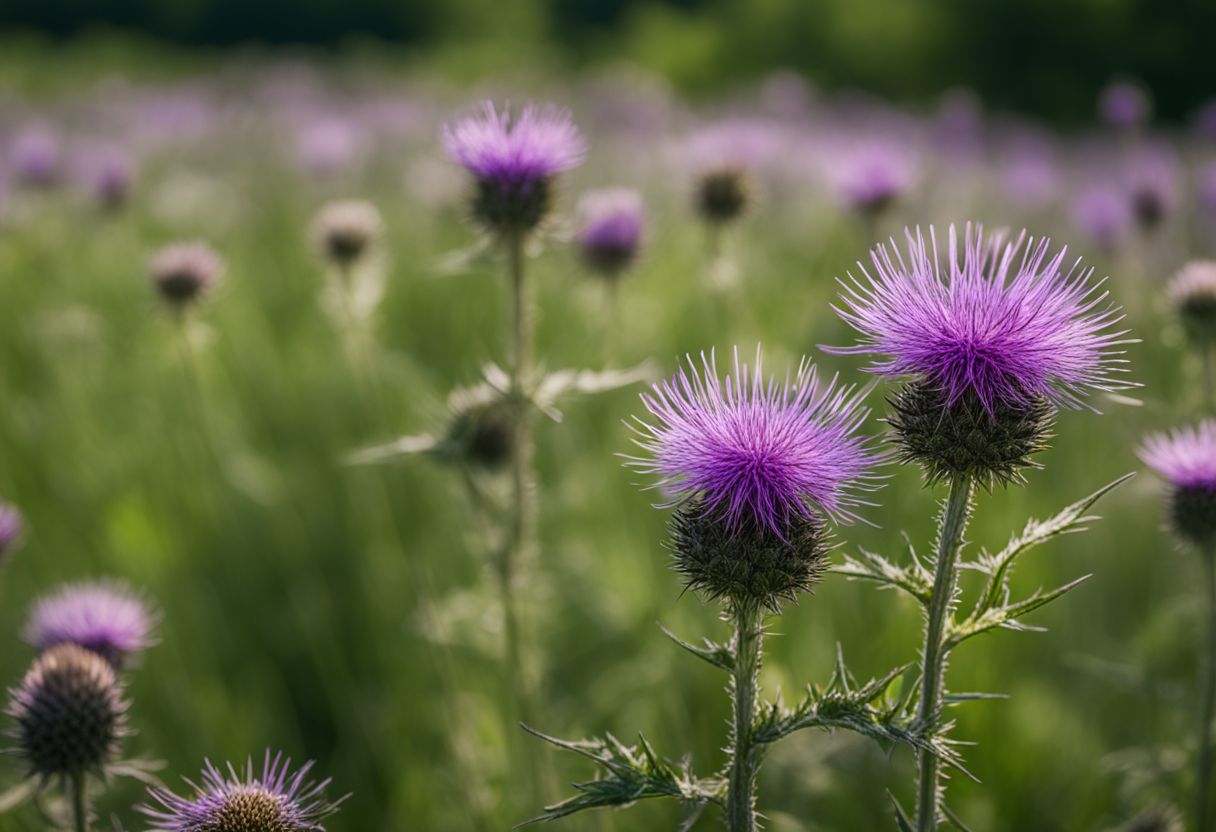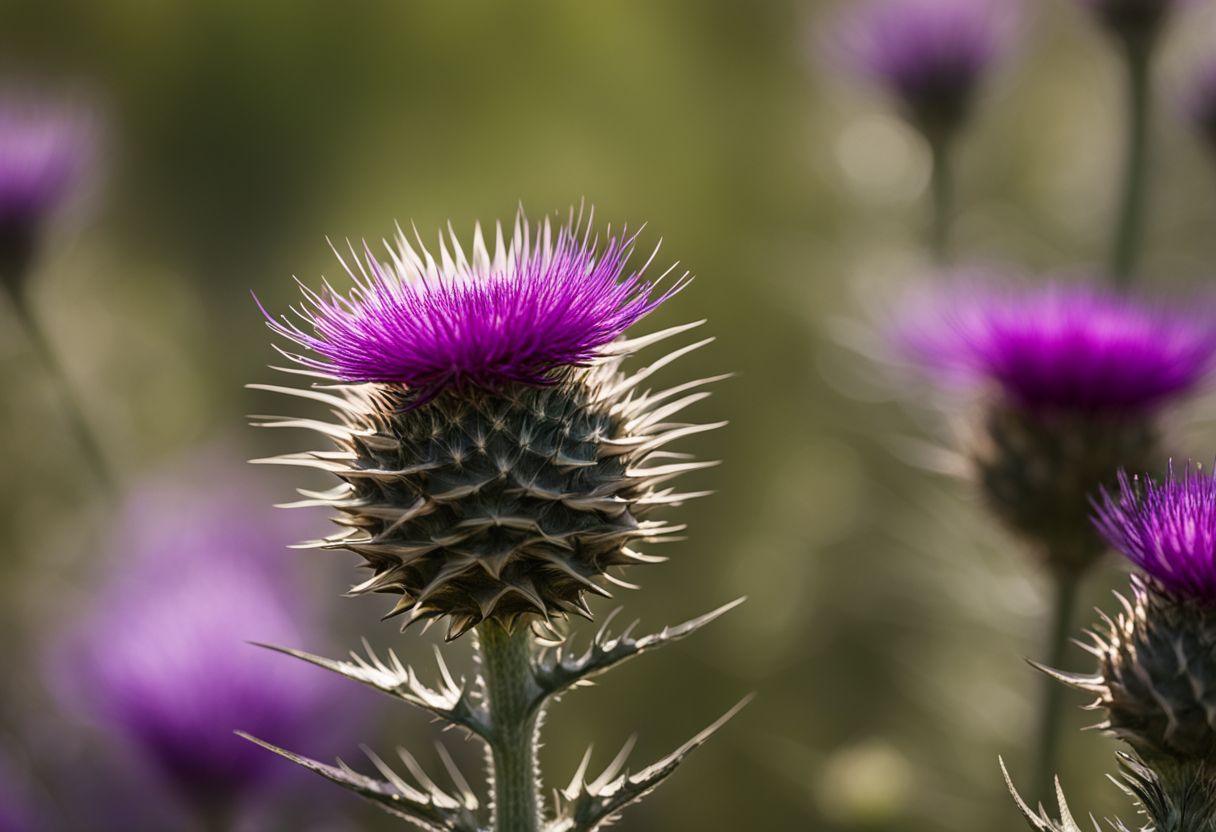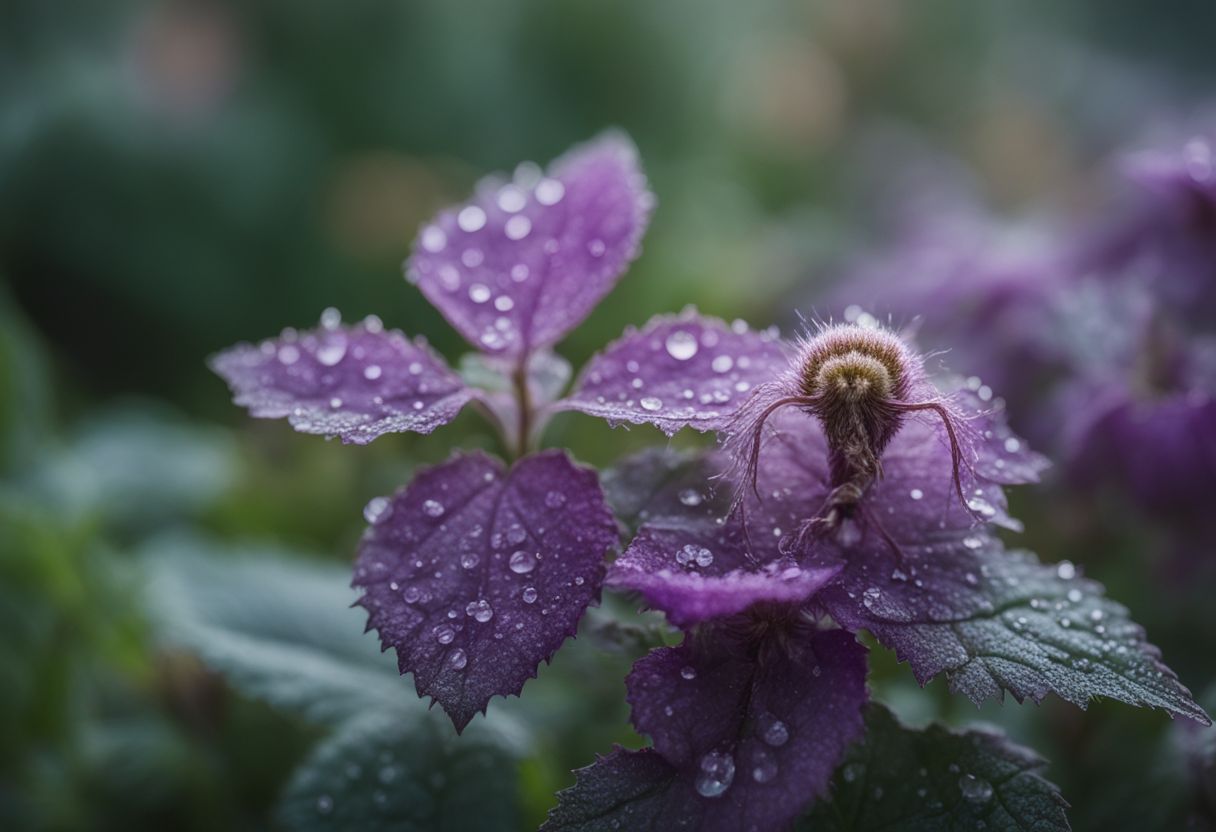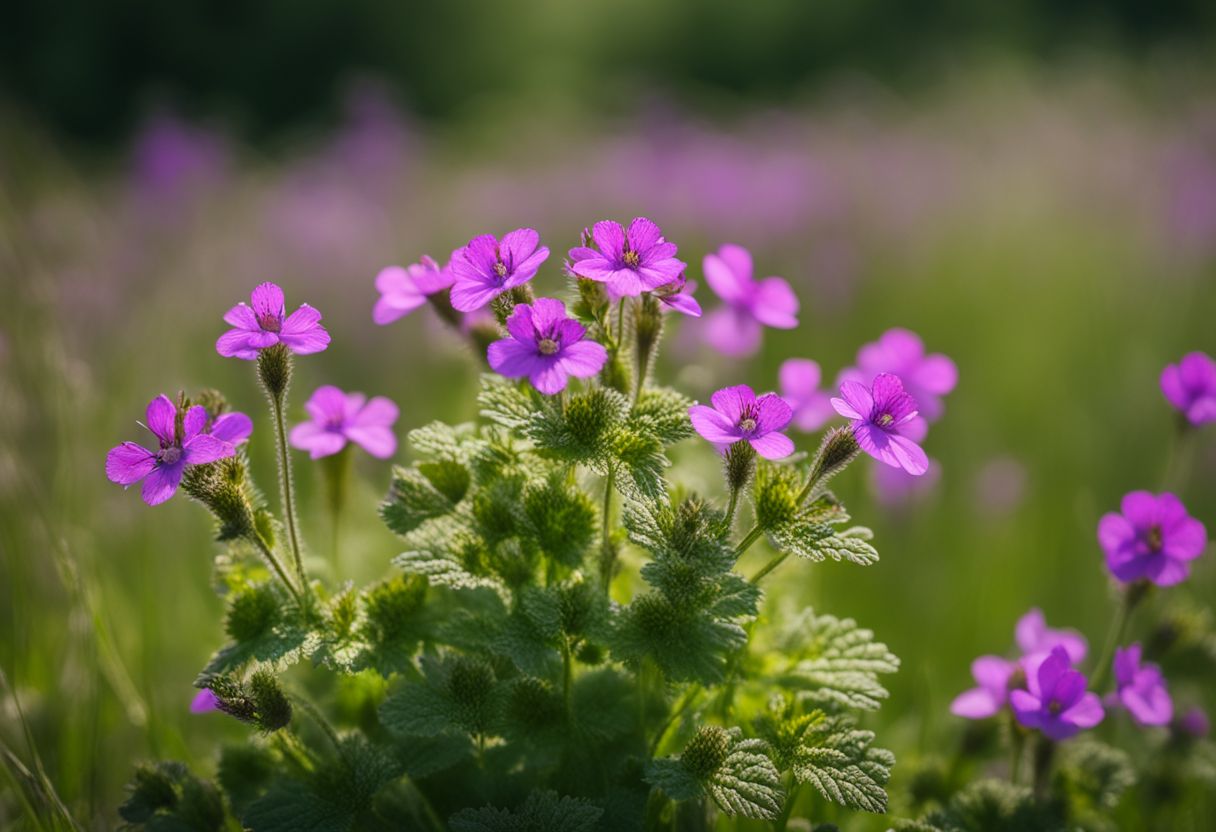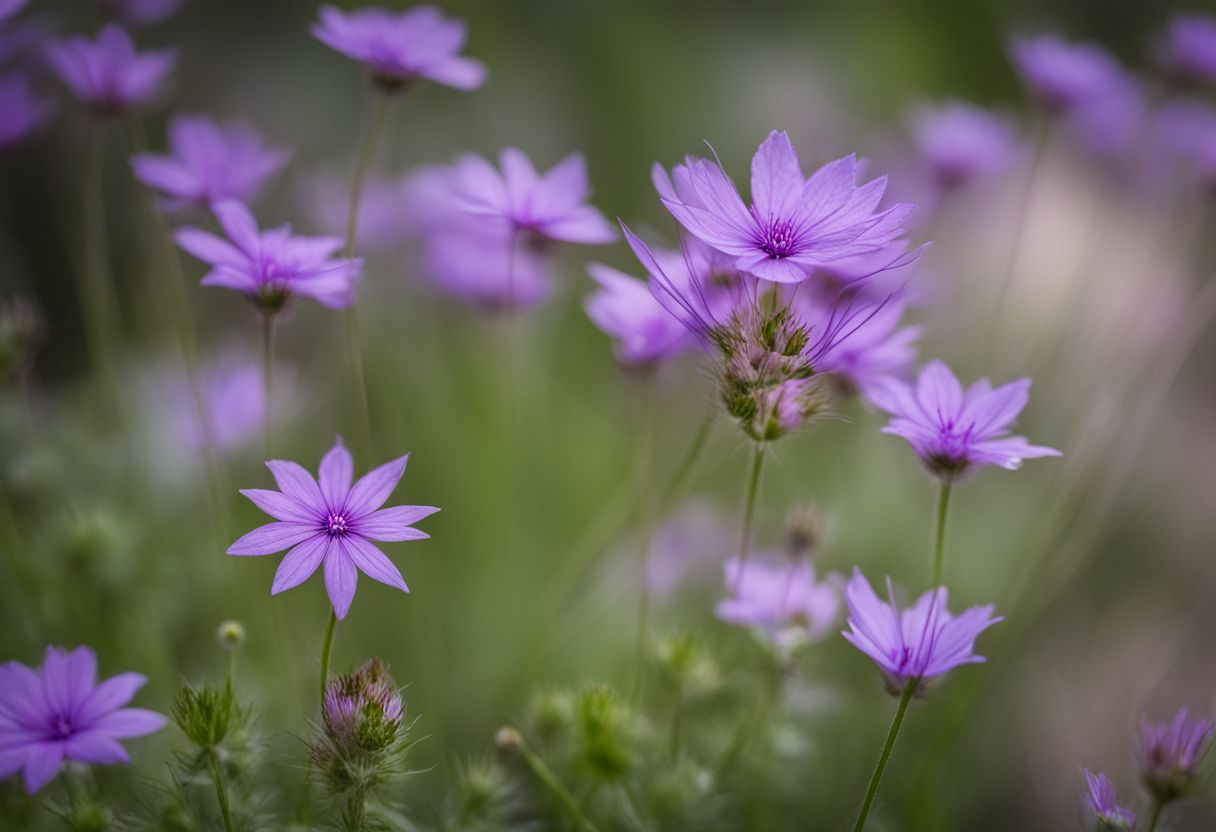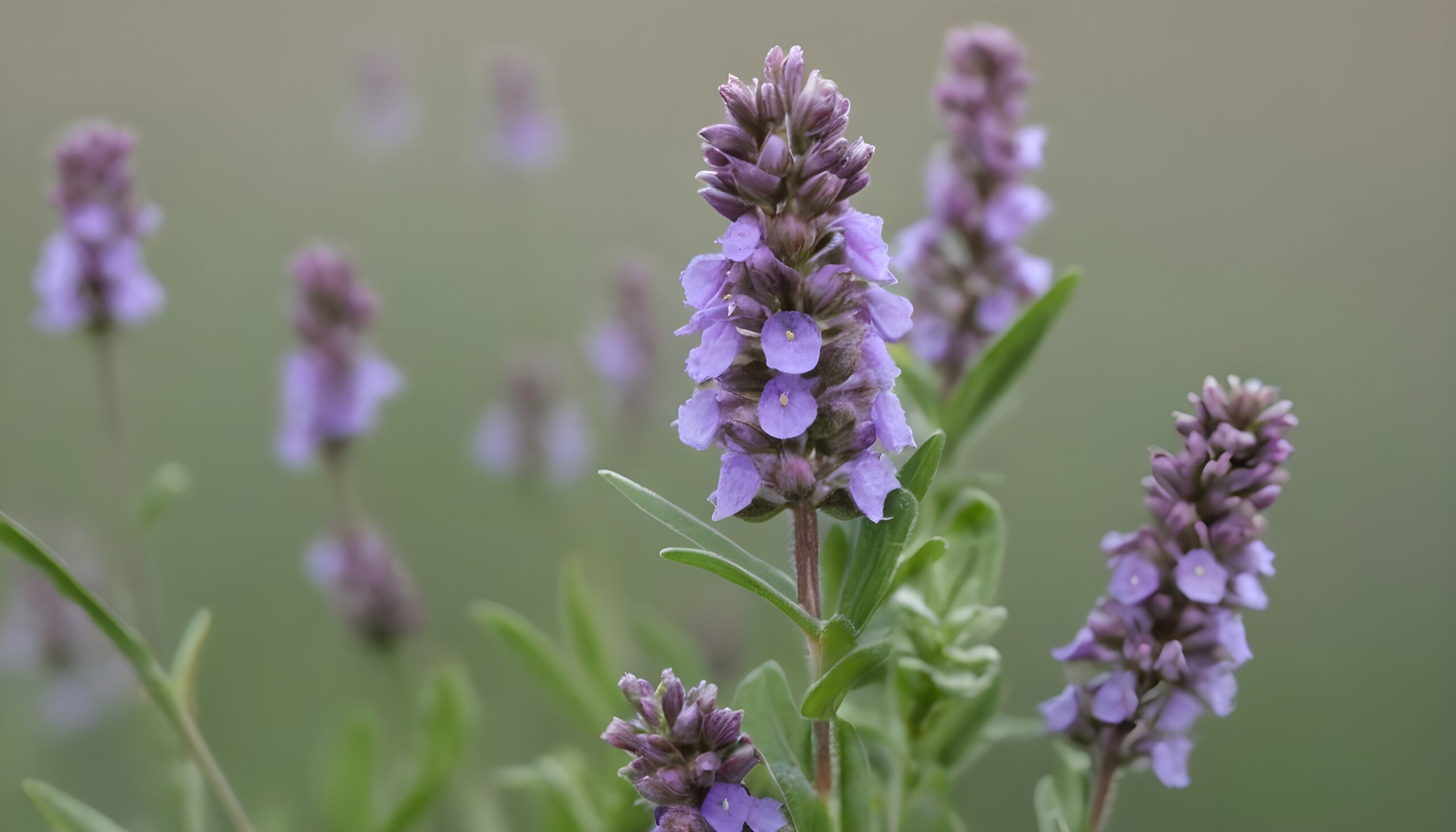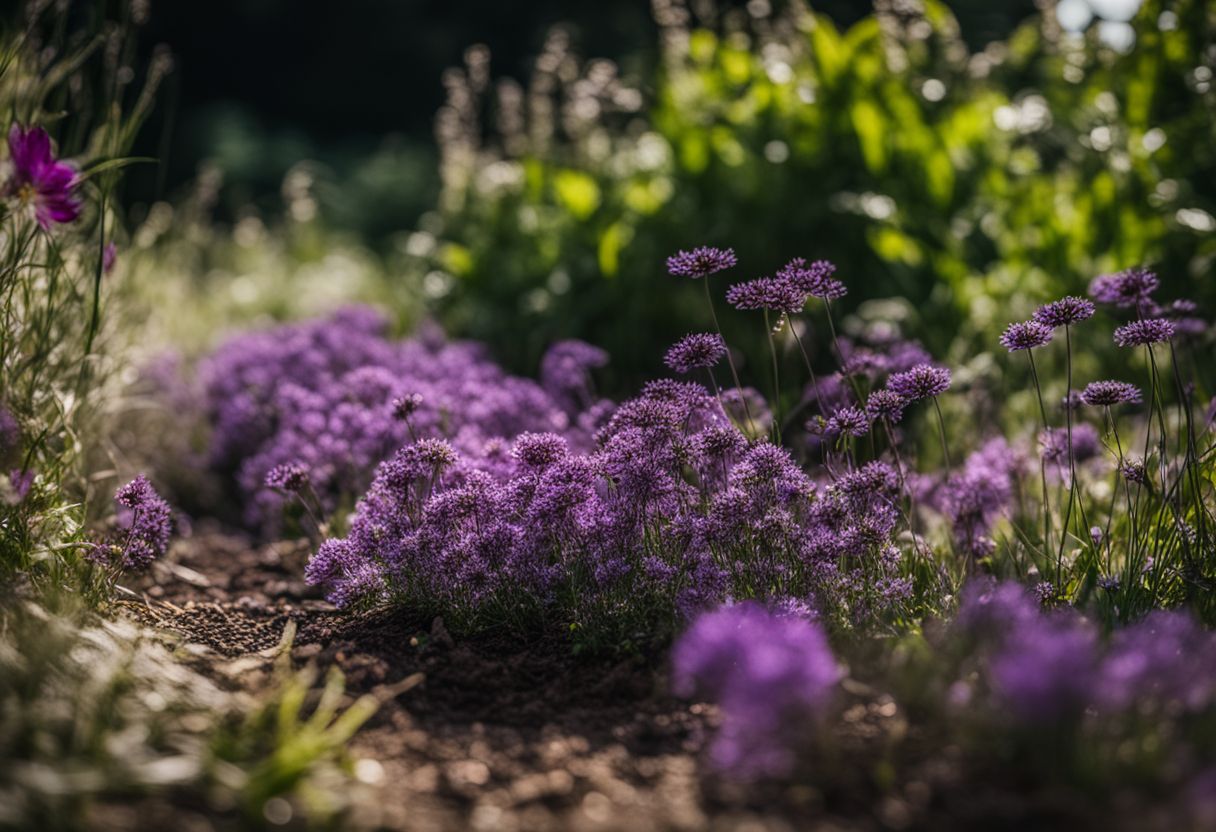Are you noticing unusual little purple flowers popping up in your lawn? These small bursts of color are often weeds competing with your grass. Our guide will help you identify these pesky plants and learn how to tackle them effectively.
Keep reading for the blooming truth about your yard’s uninvited guests!
Common Weeds with Purple Flowers in Your Lawn
Discover the uninvited guests lurking in your turf: a variety of common weeds flaunt their deceptive beauty through purple petals. These botanical interlopers, often overlooked, can significantly impact your lawn’s health and aesthetics.
Wild Violets
Wild violets charm many gardeners with their heart-shaped leaves and pretty flowers. They come in purple, white, or yellow and add a splash of color to your lawn. These low-growing perennials often pop up in mid-May and can thrive even in full sun.
In the eastern United States, the common blue violet is a favorite, showing off small purple to blue blooms.
Despite being attractive to some, wild violets are tough plants that spread quickly. They’re not just limited to one area either; you’ll find many species with a range of colors across different regions.
Their ability to cover ground fast makes them both a delightful sight for plant lovers and a challenge for those striving for uniform lawns. Violets aren’t afraid of taking over if given the chance!
Creeping Charlie/Ground Ivy
Creeping Charlie, or ground ivy, is easy to spot with its small pale violet flowers. These blooms show up in early spring and add a splash of color to your yard. The plant has fuzzy leaves that are shaped like fans or kidneys and have scalloped edges.
Crush the leaves and you’ll smell something like mint.
This plant can take over your lawn or garden because it spreads fast on the ground. Bees love Creeping Charlie’s blueish-purple, funnel-shaped flowers that usually pop up in May. Some people even use the plant for food or medicine.
But if you want a neat lawn, this vine might be too much since it loves to spread out everywhere!
Forget-Me-Nots
Forget-me-nots sprinkle your lawn with blue to purple flowers and a spot of yellow in the center. These charming blooms are from the Myosotis family. They spread quickly and can crowd out other plants in your yard.
People often find them while tending gardens or fields.
Some forget-me-nots show off pinkish-purple petals instead of their signature blue. The slender stems hold clusters of bell-shaped flowers close together. Whether they’re adding color to a field or popping up among other greenery, these small flowers make a big impact on any landscape they take over.
Black Nightshade
Black nightshade is a weed that can pop up in gardens, fields, and lawns. It stands out with star-shaped flowers that are white or have purple tinges. These pretty blossoms come together around bright yellow centers known as anthers.
While the flowers might catch your eye, be careful because this plant can cause problems.
Many people mistake black nightshade for its poisonous cousin, bittersweet nightshade. Both have starry blooms but owning black nightshade isn’t just bad news because it’s toxic; it also takes over crops if you’re not careful.
Some folks used to use black nightshade for healing despite its dangerous side. Even though it’s invasive and harmful to pets and humans, those little white or light purple flowers keep showing up every summer.
Canada Thistle/Creeping Thistle
Canada Thistle, also known as Creeping Thistle, spreads quickly and can take over your lawn. It has deep roots and grows back easily if you don’t remove the whole root system. This weed shows up with dark pink to purple flowers that look pretty but are trouble.
The leaves are spiky and can hurt if you touch them without gloves.
These weeds form thick patches in your yard using their creeping roots. They have small purple flower heads on top of tall stems. They grow fast and choke out other plants by stealing water and nutrients.
Getting rid of Canada Thistle takes effort because it’s tough and grows back from tiny pieces of root left behind.
Musk Thistle/Nodding Thistle
Musk Thistle stands out in a lawn with its large, nodding purple blooms. This weed can tower up to 7 feet tall and is hard to miss. Its dark green leaves come with sharp spines along the edges, making it look fierce.
Each Musk Thistle plant has branches that end in big, showy flowers.
This thistle isn’t just known for its height; it’s an aggressive spreader too. Originating from Europe and Asia, it quickly became a problem in North America. When Musk Thistle goes to seed, it can take over large areas fast.
Those pretty purple tops are actually troublemakers! They create lots of seeds that scatter far and wide if not controlled right away.
Common Thistle/Spear Thistle/Bull Thistle
Bull thistle, also known as common or spear thistle, stands out with its rigid, large spines. Its leaves have a scary look that can put off anyone trying to walk through the lawn barefoot.
This weed grows tough and can lay flat in a rosette shape to dodge mower blades.
You might find bull thistle daunting because of its appearance. Yet, it’s easier to control than other types of thistles. It spreads across yards but doesn’t resist removal as much as some more stubborn weeds like Canada thistle does.
Even though it looks fierce, getting rid of this purple-flowered intruder from your lawn is quite doable with the right approach.
Purple Dead Nettle
Purple dead nettle stands out with its soft green leaves and purple flowers. It looks like stinging nettle but won’t hurt you. People often find it in their yards come late spring.
This weed is strong and spreads easily over lawns across America.
You can eat purple dead nettle or use it for health remedies. Its tiny pinkish-purple blooms sit above the leaves, adding spots of color to your grass.
If you want to clear them away, try natural methods or pick them for your kitchen and medicine cabinet.
Henbit
Henbit stands out in your lawn with its pink to purple flowers. This weed is easy to spot due to the fine, soft hairs that cover it and point downward.
Its tiny blooms arrange themselves in whorls at the upper leaves, creating a sea of color.
The petals fuse into a two-lipped tube, giving them their unique shape.
This plant is not just another pretty face; as a member of the mint family, you’ll notice a distinct scent when you rub its stem between your fingers. Henbit blooms early in spring and lasts through the season.
It’s an annual winter weed that can quickly take over patches of grass if not managed properly.
Dove’s-Foot Crane’s-Bill
Dove’s-Foot Crane’s-Bill, also known as Geranium molle, is a small weed with noticeable features. Its leaves are hairy, and its stems have a reddish tint. The pinkish-purple flowers catch the eye with their jagged edges and can be seen from April to September.
This plant prefers dry soil and often pops up in lawns and flowerbeds.
Although native to the UK, many gardeners in the US find Dove’s-Foot Crane’s-Bill in their yard too. It spreads quickly over time if not managed well. Lawn lovers treat this annual weed to keep their grass looking neat.
With its ability to bloom for months, it can become more than just an occasional nuisance without proper lawn care.
Selfheal/Healall
Selfheal, or Healall, is a versatile plant you might see in your lawn. Its scientific name is Prunella vulgaris. This little weed can spread quickly, covering the ground with purple flowers.
It’s not just any weed; people have used it as food and medicine for years.
The plant has oval leaves that grow opposite each other on square stems. At the top of these stems, dense clusters of bluish or violet flowers bloom proudly.
Selfheal grows only 12-16 inches tall but stands out with its beautiful floral spikes that could be purple, pink, or even white.
Each flower looks like a tiny snapdragon and sits tightly packed in elongated groups.
How to Identify These Weeds
Discovering the unique traits and preferred environments of purple-flowered lawn intruders unlocks the secret to their identification. Arm yourself with knowledge of each weed’s distinct features, from leaf shape to flowering patterns, paving the way for precise recognition and targeted action.
Appearance and characteristics
Purple deadnettle stands out with its heart-shaped leaves edged with tiny teeth. These leaves have a hint of purple, making the plant easy to spot. It belongs in the mint family and shows it through its look and smell.
Canada thistle’s spiky, gray-green leaves warn you to stay away. This tough weed also shows off pretty purple flowers.
Creeping Charlie spreads across your lawn like a green carpet with scalloped edges. Its stems are square in shape and hold bluish-purple flowers shaped like funnels. The bugleweed stays low to the ground but can’t hide its purple blooms from view.
Each weed has unique flowers and leaves that help tell them apart from each other and from your wanted plants.
Habitat and growth habits
Weeds with purple flowers like wild violets and henbit love shady, moist areas. They often pop up in lawns that are not too dry or sunny. These weeds can spread quickly and grow well in cool seasons.
Some, like the Joe-Pye weed, prefer wetlands or damp fields and can get really tall.
Most purple-flowered weeds start growing in late spring or early summer. They have strong roots and can survive through different weather. Many of these plants are tough and can take over a lawn if you don’t stop them early on.
Their seeds spread fast, helping them to grow in new spots every year.
Tips for identification
Identifying weeds with purple flowers takes a keen eye. Use the Grass, Weed, and Wildflower Guide to spot the unique features of each plant
- Look at the leaves: Each weed has distinct leaf shapes and patterns. For example, henbit leaves are rounded with deep lobes, while purple deadnettle leaves have a more triangular shape.
- Examine the stems: Some weeds like pokeweed have thick, fleshy stems, while others like wild violets have thinner stems.
- Check the flower shape: Flowers can be trumpet-shaped or have purple round petals. Notice how the flowers sit on top of the plant or in clusters.
- Pay attention to growth habits: Weeds such as bugleweed spread outwards from a central point, forming a mat-like structure.
- Observe where they grow: Some purple flowering weeds prefer shady areas; others thrive in full sunlight.
- Notice when they bloom: Many weeds produce flowers in late spring and early summer. This can help you tell them apart from other plants.
- Look for unique characteristics: Some plants like those belonging to the mint family may have a distinct scent when their leaves are crushed.
Potential Issues Caused by These Weeds
While some may find the splash of purple across their lawn enchanting, these weeds are not just a visual nuisance; they wage a silent war beneath the soil. They aggressively compete with grass for essential nutrients, water, and light, potentially undermining both your lawn’s health and aesthetics.
Competition for resources
Weeds with purple flowers like henbit and Creeping Charlie can cause big problems in your lawn. These weeds take water, light, and nutrients away from the grass that you want to grow.While weeds like henbit and Creeping Charlie relentlessly vie for resources, the elegant presence of the White African Iris adds a touch of grace, showcasing nature’s diverse palette.
They spread fast and crowd out your plants. This competition can make your lawn weak and more likely to get sick or have bugs.
When these tough weeds move in, they don’t play fair. Creeping Charlie has a strong will to survive. It steals the good stuff from the soil before your plants can get it. Lawn health goes down because of this fight for food and space.
Your pretty garden might lose its charm if aggressive purple-flowered weeds keep taking over.
Negative effects on lawn health
Purple flowers may look pretty, but they’re often signs of weeds that harm your lawn. These unwanted plants steal water, sunlight, and nutrients from the grass. Your lawn struggles to grow and can get sick easier with weeds around.
Wild violets form thick mats that suffocate the grass beneath them.
Creeping Charlie doesn’t play nice either; it messes up other plants trying to grow by hurting their seeds and roots. When lawns are weak from bad watering methods, it’s easier for different weeds to move in and take over.
Henbit competes directly with your healthy plants. It saps their strength, making your yard look patchy instead of lush green. Purple dead nettle is another one you’ve got to watch out for; if you don’t stop it early, it’ll hurt how well your lawn does in the long run.
Potential harm to pets and humans
Some purple weeds in your yard can hurt pets and people. Flowers like the beautiful but toxic creeping Charlie can make animals sick. Dogs, cats, or horses might vomit or act clumsy after touching these plants.
One weed, known as jimsonweed, has parts that are all poisonous to humans and horses. They contain tropane alkaloids which are really dangerous.
People need to know about these unsafe plants among the common lawn weeds. If you see your pet drooling a lot or having tummy troubles, they may have eaten something harmful like a plant with fluffy flowers or trumpet-shaped blooms that should not be touched.
It’s smart to learn which ones can cause harm before it’s too late especially those with purple flowers that look nice but are actually very risky for our furry friends and us.
Methods for Controlling and Removing Purple Flower Weeds
Discover effective strategies to regain your immaculate lawn by mastering the art of tackling invasive purple flower weeds, and embark on a journey that transforms your yard into an enviable green oasis.
Manual removal
Manual removal is a direct way to get rid of weeds with purple flowers in your yard. It’s effective for plants like wild violets, especially during fall when they’re easier to control.
- Wear gloves to protect your hands before starting.
- Identify the weed you want to remove; look for unique features like leaf shape and flower type.
- Use a small shovel or hand trowel to dig around the weed’s base.
- Aim to remove the entire root system to prevent regrowth.
- For wild violets, try removing them in the fall for best results.
- Gently pull the weed upward while holding close to the root base.
- Make sure all parts of the weed are completely out of the ground.
- Dispose of the weeds properly so they don’t reseed or spread.
- Fill in the hole left behind with soil to discourage new weeds from growing there.
- Keep an eye on the spot for any signs of returning weeds.
Herbicide options
Herbicides can help you get rid of those pesky purple flower weeds in your lawn. Pick the right one to target the weeds without hurting your grass.
- Preemergence herbicides work well before weeds appear. They prevent seeds from growing into plants.
- Use a selective broadleaf herbicide for wild violets. Look for ones that name this weed on the label.
- Glyphosate sprays are tough on lespedeza. A 5% solution will do the best job.
- Ground ivy responds well to herbicide when blooming bluish – purple flowers in May.
- Apply herbicide to creeping Charlie during active growth. This helps stop it from spreading.
- Contact herbicides with diquat or paraquat target weeds quickly. They work great in flower beds.
- Herbicides containing pelargonic acid are fast acting too. They kill weeds soon after application.
Cultural methods
Cultural methods help keep purple flower weeds away without chemicals. Good lawn care is a must. This means mowing at the right height, watering deeply but not too often, and feeding your grass to make it strong.
A thick healthy lawn stops weeds from growing in the first place.
Over seeding bare spots prevents weed seeds from taking root. Use shade-tolerant grass in darker areas where wild violets like to grow. Since these weeds have defenses against hand pulling, try smothering them with mulch in your flowerbeds.
In ornamental plant production, keep the area clean and monitor for weeds regularly to maintain a successful garden.
Prevention techniques
Preventing purple flower weeds in your lawn means stopping them before they start. Here are effective ways to keep your garden free of these unwanted plants:
Final Thoughts and Recommendations
In managing those pesky purple invaders, taking a proactive stance can significantly benefit your lawn’s ecosystem. Explore sustainable approaches and consider expert advice to ensure your green space remains vibrant and healthy.
Importance of maintaining a healthy lawn
A healthy lawn does more than just look good. It acts like a giant air purifier for your neighborhood. Grass blades catch dust and dirt from the air, making what we breathe cleaner.
Plus, lawns play a big part in creating oxygen which all living things need to survive.
Good grass stops soil from eroding too. Its roots hold the ground together when heavy rains come. Lawns also cool down our gardens on hot days, just like little green air conditioners for the outdoors! By keeping your lawn in great shape, you help nature and keep your home looking beautiful too.
Seeking professional help if needed
Sometimes purple flowers in your grass are tough to handle on your own. You might not know if they’re good plants or bad weeds. If you’re unsure, it’s smart to get help from someone who knows a lot about plants.
Experts can tell you what kind of purple flower you have and the best way to deal with it. They have tools and methods that work well.
Getting help is especially important if the purple flowers are wild violets or another stubborn weed. These professionals use their skills in fall, which is often the best time to stop those weeds for good.
They will make sure your lawn stays healthy without harming any pets or people around.
Continuous monitoring and maintenance.
Keep a close watch on your lawn to catch those pesky purple flower weeds early. Regular checks help you spot new invaders before they spread. Use what you know about these common types of weeds and their growth habits to find them quickly.
A healthy lawn is your best defense, so make sure it gets the right nutrients and water.
You need to be diligent with yard care to keep out unwanted plants like ground ivy or creeping thistle. Divide and replant ground covers when necessary, especially those with pretty purple blooms that can get out of hand.
Snip off old flower spikes to encourage new ones, keeping your garden looking great all season long. Stay vigilant against aggressive weeds by pulling them as soon as they show up; this way, maintaining a lovely outdoor space becomes easier over time.
Conclusion
Little purple flowers may look pretty, but they can be tough on your lawn. These weeds fight for space, water, and nutrients. Knowing how to spot and deal with them is key. Get rid of these invaders to keep your grass healthy.
Remember, a well-cared-for lawn will have fewer weeds!
FAQs
1. What are the purple flowers in my grass?
The purple flowers could be a type of flowering weed, such as Purple Loosestrife or a plant that belongs to the mint family.
2. Can yellow and white flowers grow with the purple ones?
Yes, some weeds can have yellow or white flowers along with pink or purple ones on the same plant.
3. Are all weeds with purple flowers bad for my lawn?
Not necessarily; some people find types like daisy weeds and those with clusters of deep purple flowers attractive, though invasive weeds should be removed.
4. How can I tell different types of flowering weeds apart?
Look closely at features like leaves and stems, flower shapes such as trumpet-shaped or fluffy clusters, and use pictures for accurate identification.
5. Are these weed flowers dangerous to other plants?
Some like Purple Loosestrife are invasive and might crowd out native North America plants while others may coexist without harm.
6. When is it best to remove these flowering weeds from my grass?
It’s good to remove them before the flowers go to seed to stop them from spreading further in your lawn.

Jonathan Fleck, a seasoned 40-year-old writer and editor, boasts an impressive 12-year career specializing in the dynamic realms of Home and Garden. As the Chief Editor of Home and Around Blog, Jonathan is at the forefront of curating content that resonates with enthusiasts and novices alike. His vast knowledge encompasses a range of topics, including houseplants, small space gardening, home DIY, small space living, and crafting.
Jonathan’s academic journey includes a graduation with a degree in the History of Art from Long Island University (LIU) in New York City, New York, United States. This educational background, coupled with his passion for creative expression, has shaped his unique approach to writing about the aesthetics and functionality of living spaces.
With a keen eye for detail and a wealth of experience, Jonathan has become a trusted voice in the Home and Garden community. His articles not only provide practical advice but also inspire readers to transform their living environments into personalized havens. Whether it’s cultivating a thriving indoor garden, optimizing small living spaces, or embarking on creative DIY projects, Jonathan Fleck’s expertise shines through, making him a respected authority in the field.

